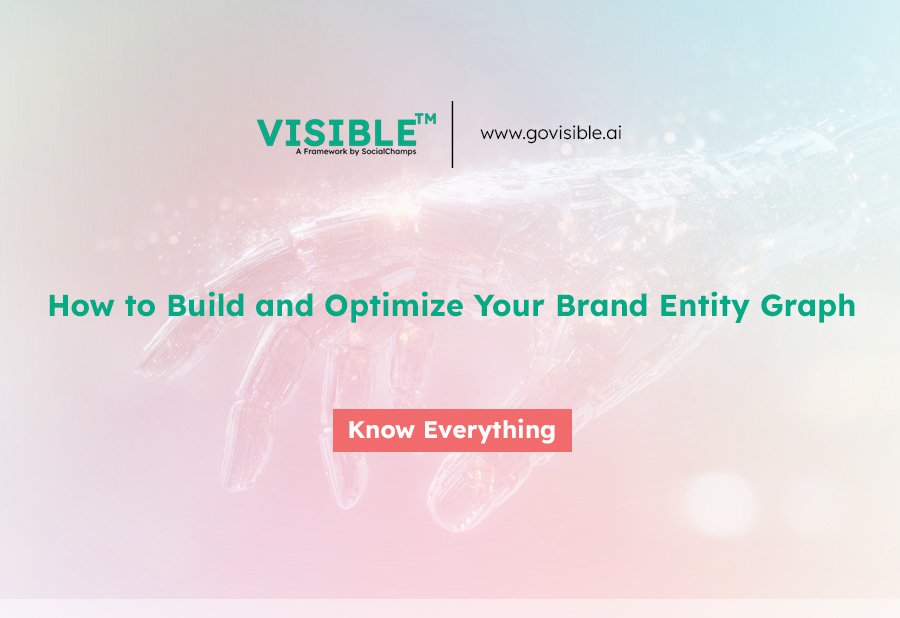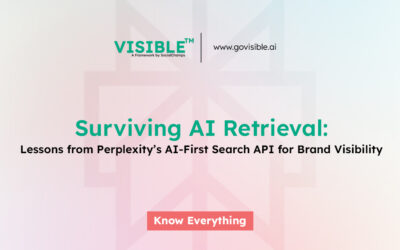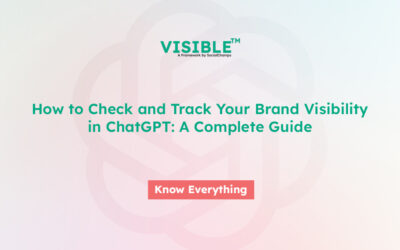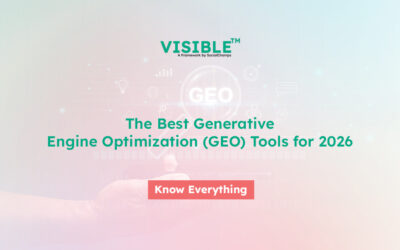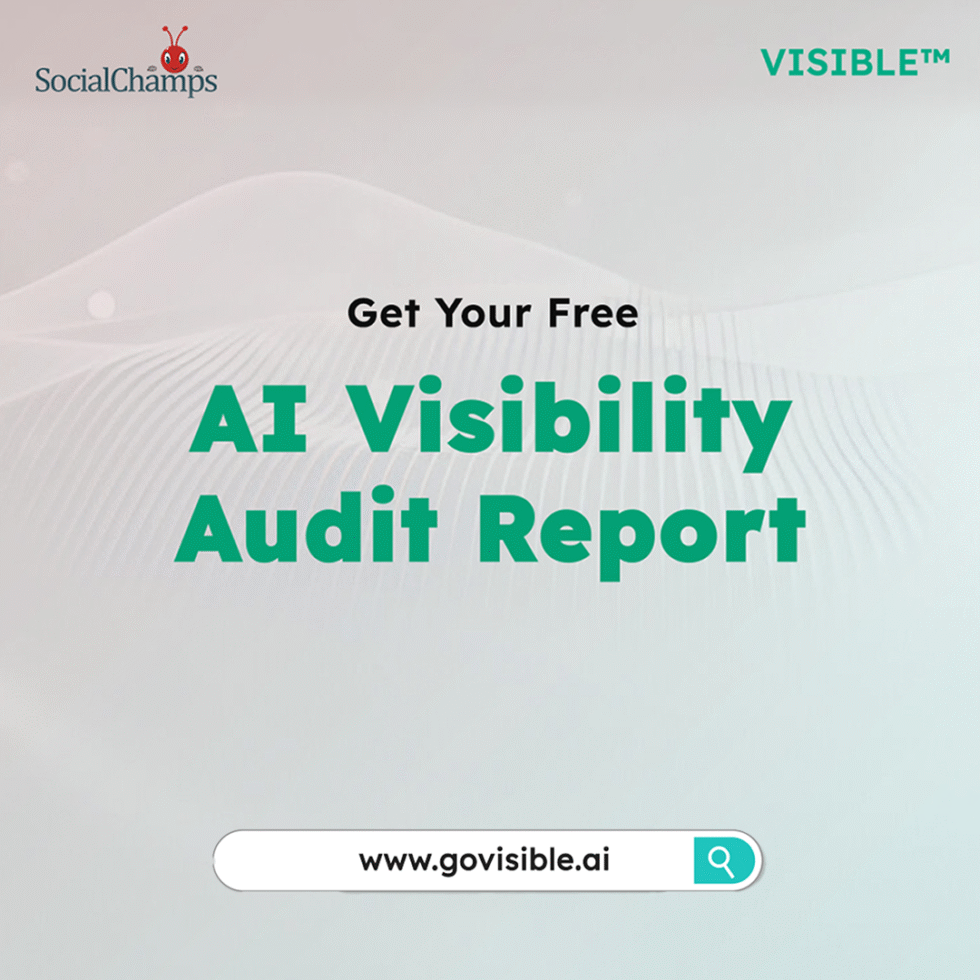What is a Brand Entity Graph?
At VISIBLE™, we define a Brand Entity Graph as a structured digital map of your brand’s core assets, relationships, and attributes—modeled in a format interpretable by AI systems. It comprises nodes (representing entities such as your brand name, products, people, content, patents, etc.) and edges (representing relationships such as “founded by,” “owns,” “partners with”).
Key components include:
- Declared Entities: Explicit mentions such as your company name, product SKUs, founder bios.
- Inferred Entities: Relationships deduced from web and API content—like topic clustering or product co-occurrence.
- Neurosemantic Anchors: High-frequency, high-cohesion concepts that consistently associate with your brand in vector space.
Entity Harmonization refers to resolving different representations of the same entity into one canonical node. Entity Compression is the strategic reduction of redundant or conflicting nodes to increase clarity for AI ingestion.
Structured vs. Unstructured Brand Data
| Data Type | Examples | AI Interpretability | Risk if Ignored |
|---|---|---|---|
| Structured Data | Schema.org, JSON-LD, Wikidata | High | Low AI visibility loss |
| Unstructured Data | Blogs, PDFs, Press Releases | Medium-Low | High AI misrepresentation risk |
Why Entity Graphs Matter in the Age of AI
How LLMs Ingest Brand Signals
Large Language Models like GPT-4 or Google Gemini don’t just crawl pages—they embed conceptual relationships. When OpenAI ingests your brand’s content, it tries to resolve and vectorize your identity across the web. Weak or conflicting entity signals lead to dilution.
Impacts on Search, Chat, and Voice Interfaces
In generative interfaces—like Perplexity, Sora, or AI-powered chatbots—brands aren’t selected based on keywords. They’re selected based on entity cohesion and confidence. If your brand graph is ambiguous, you’re likely to be skipped.
Building Your Brand Entity Graph
Foundational Sources (Website, Wiki, APIs)
Start with the obvious: your website. But go beyond meta tags. Ensure every page has declared entities using Schema.org, OpenGraph, and JSON-LD. Leverage Wikidata to anchor your brand in the public graph. Expose key data via APIs that major AI models can crawl.
Example: Stripe’s developer docs expose clear API endpoints tied to core business concepts. These act as anchor points for AI indexation.
External Graph Alignment (Google, OpenAI, LinkedIn)
Align your internal graph with public graphs. Google’s Knowledge Graph, OpenAI’s vector databases, and LinkedIn’s organizational data all carry versions of your brand. Consistency is key—use Entity Harmonization techniques to align naming, categories, and descriptions.
Explore deeper insights in Intelligent Entity Optimization: How Brands Get Indexed Inside AI Models.
Optimizing Your Brand Entity Graph for AI Indexability
AI models don’t reward content volume—they reward entity clarity, consolidation, and recurrence. Here’s how to make your entity graph truly indexable:
1. Entity Consolidation: Fix the Drift
Too often, brands suffer from entity drift—where different versions of their name or products appear scattered across data sources.
- Example: Are “Visible Inc.” and “Visible AI” showing up as two distinct entities in Wikidata, Crunchbase, or other public graphs?
- Solution: Use canonical URLs and consistent identifiers across all data endpoints.
VISIBLE™ Tip: Our Graph Gap Analysis identifies duplicate entity nodes across public and private datasets.
2. Schema and Structured Data: Declare and Connect
Don’t just describe who you are—define how your brand assets relate.
- Use JSON-LD: Prioritize nested entity relationships. For example, link your CEO entity to your company entity.
- Add @sameAs Tags: Map your brand to external knowledge bases (Wikipedia, LinkedIn, Crunchbase).
Our framework guides clients on the minimum schema coverage needed for LLM ingestion. – VISIBLE™
3. Entity Reputation and Recurrence: Become Ubiquitous
LLMs prioritize entities that appear frequently and consistently across trusted sources.
- Maintain Recurrence: Ensure your entity appears regularly in high-authority contexts—news articles, analyst briefings, and thought leadership.
- Content Cluster Design: Design your content strategy to reinforce core entity mentions across web properties.
The Entity Relationship Engine automatically maps and scores your entity recurrence across indexed surfaces. – VISIBLE™
How the VISIBLE™ Platform Helps Brands Map and Measure Their Graph
Graph Gap Analysis
The VISIBLE™ Platform identifies where your brand lacks visibility across key index surfaces. The Graph Gap Score benchmarks your entity coverage vs. competitors, signaling where you’re losing AI real estate.
Entity Relationship Engine
We’ve built the first Entity Relationship Engine into the VISIBLE™ Platform that auto-maps your entity graph using both public and private data—connecting product descriptions to press releases, FAQs to talent bios.
Traditional SEO rewarded link quantity. AI ranking rewards entity clarity. The VISIBLE™ Platform ensures your entities are deeply, consistently represented.
Download our Entity Optimization Playbook for Brands

